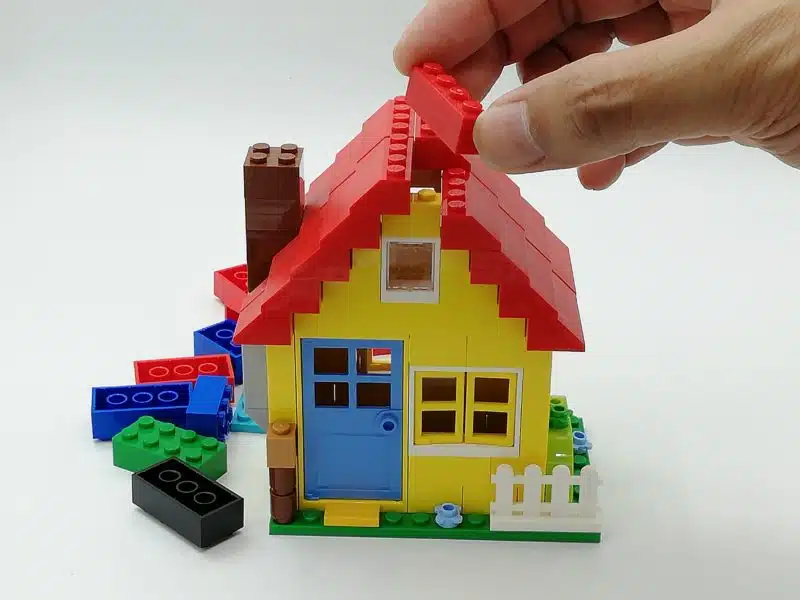8 companies that use social media marketing effectively
Are you reaching your audience on social media? Here are some of the most successful campaigns to use as inspiration.
There are many emerging social media platforms that marketers would be wise to take note of. These new platforms enable digital marketers to better connect with their target audiences. For example, TikTok gains eight new users per second and claims the top spot in the global app download charts.
Other emerging platforms — like Twitch and Discord — are becoming increasingly popular, making them ideal tools to include in your marketing strategy. While these networks may have a comparatively smaller user base, they focus on different niches and are helpful for targeted advertising. For instance, these two platforms have large communities of online gamers.
Regardless of which platform you choose, you must engage your audience and capture their attention. This article will discuss eight modern campaigns that you can use for inspiration when marketing your brand.
TikTok’s Re: Make campaign
In July 2021, TikTok challenged its community to think about the most memorable advertisements in recent history and create their versions of the ads for its Re: Make campaign. The idea was to turn iconic commercials into TikTok shorts.

The first brands to participate in the Re: Make initiative were Skittles, Snickers, and Old Spice. It was a great way for TikTok to stay in contact with big companies like these and get them to participate in future Re: Make campaigns. It also boosted engagement tenfold and led to tons of user-generated content. TikTok launched the campaign and let its users do the rest.
The brilliance behind Re: Make was that TikTok, despite being a platform for new-age content, had now briefly become a creative hub to reimagine the ’90s and 2000s nostalgia.
This campaign was a success because it combined the familiarity of growing up with an increasingly popular application like TikTok. This shows that content can be recycled and still have a massive impact.
Anhueser-Busch’s “Let’s Grab A Beer” by Wieden+Kennedy
In 2021, American brewing company Anheuser-Busch came together with Academy Award-winning director David Fincher and musician Atticus Ross to create the excellent “Let’s Grab A Beer” campaign.
This ad creates an escapist reality wherein consumers associate the product with positive emotions.
The ad aired at the 2021 Super Bowl, and Anheuser-Busch continued to build on the initial success of its campaign by adding a call to action through its collaboration with the White House, giving out free beers to those who got vaccinated. This also enabled them to share user-generated content from social media at the same time.
This campaign combines the shared and common experience, the festive vibe of the Super Bowl, famous actors, and user-generated content. This creation of a collective and optimistic future using the free distribution of its product and user-generated content made this campaign an instant success.
LEGO’s Rebuild the World campaign by BETC

The 2021 iteration of the company’s Rebuild the World campaign, named “The Damp Knight,” focuses on creativity in children – it celebrates children as experts in creative problem-solving. The commercial demonstrates what can be accomplished when individuals come together to solve problems and overcome challenges.
The ad follows a classic template: make the audience sympathize with the protagonist (the Damp Knight), trying to cross the river to see his friend, the bear. However, the conflict is eventually resolved when people of different occupations come together, using their varied skills to help the knight.
Although this campaign uses a rather traditional story, it shows that it can still be effective, depending on the context of your product. As a result, LEGO was able to market to both children and adults on social media and boost its overall revenue by 27%.
Starbucks’ in-store augmented reality experience
A Starbucks outlet in Shanghai became the first Starbucks to offer an augmented reality (AR) experience in its outlet. Customers have to download an app that enables them to unlock this experience. They can point their phones at key features around the roaster, like the cask, which will display new information, acting as a tour guide. Customers can explore the space and collect virtual badges. Once they order all, the customers receive a custom roastery social media filter to share.
Emily Chang, senior vice president and chief marketing officer for Starbucks China, said, “We wanted to create a completely new brand experience for our customers. Coffee is already such a deeply sensorial experience, even before the first sip: from hearing the unmistakable sound of beans being freshly ground to inhaling that rich aroma and sipping your perfect blend, brewed just right. We wanted to take that customer experience even further.”
This campaign transforms a seemingly everyday experience into a unique and immersive experience. By leveraging trendy technology and the authenticity of your product, you can create an effective campaign that helps your business grow.
Coca-Cola’s metaverse campaign
The metaverse is a digital space where people can interact, play, work, and socialize. Many companies, such as Meta (formerly known as Facebook), invest heavily in developing the metaverse.
Coca-Cola has leveraged this exponential interest in the metaverse, especially by its younger customers, to launch a “Coca-Cola Zero Sugar Byte,” which will “bring the flavor of pixels to life.” This drink will be launched in the metaverse before being available in stores.
The innovative marketing approach is proving to be effective as revenue per launch has increased by 30% and gross profit per launch by 25%, compared to previous years.
Coca-Cola’s campaign demonstrates that tech will invariably play a significant role in innovative marketing techniques. By using disruptive technology and catering to the desires of its millennial customers, Coca-Cola has effectively combined tech, creativity, marketing, and product development to improve the returns on its campaigns.
Hershey’s Twitch campaign
Twitch is an interactive live streaming service for content spanning gaming, entertainment, sports, music, and more. Hershey’s started its campaign on Twitch in 2019. They advertised through video ads on Twitch itself, participated in TwitchCon, and sponsored two Twitch streamers, Tim “TimTheTatman” Betar, Ben, and “DrLupo” Lupo.
More recently, Hershey’s has continued its partnership with Twitch to promote its brand Oh Henry! They want to improve the brand’s relevance and become the go-to snack for gamers. With every purchase of the Oh Henry! Level up bar, customers receive “Bits” – an online currency that Twitch viewers can use to support streamers and get access to special features on the platform.
Kaetlyn Graham, senior marketing manager at The Hershey Company, noted, “Since Twitch reaches a highly engaged target and enables on-pack branding and video advertising, the partnership just made sense.”
Hershey’s figured out precisely what consumer segment they want to target and has effectively found the right platform to reach a highly engaged consumer base. Platforms like Twitch often have a sense of community, which can prove to be a highly lucrative source for promoting and developing your brand.
The ASICS NFT campaign
ASICS became one of the first sportswear brands to launch an NFT campaign. In July 2021, ASICS announced the ASICS SUNRISE RED™ NFT COLLECTION – a footwear release available via a digital auction.
NFTs – non-fungible tokens – allow owners exclusive ownership rights for a particular digital asset. Given that NFTs are non-duplicable and unique, brands can use them to further enhance their brand exclusivity and positioning on social media.
“At ASICS, we strive to be at the forefront of innovation in the sporting goods sector,” said Joe Pace, Head of Business Development, ASICS Running Apps. “So, while we are excited to drop the world’s first digital shoe release from a major sporting goods company, this is only the beginning. In coming together with some of the most creative and forward-thinking digital artists in the world through our new Artist-in-Residence program, our long-term vision is to push the boundaries of digital goods to inspire physical activity.”
Oscar Mayer’s Bologna Face Mask
Oscar Mayer is an American meat production company that has ventured into the skincare industry with its iconic “Bologna Face Mask.” Earlier this year, the meat company, a subsidiary of Kraft Heinz, released its unique product, which sold out within a few hours on Amazon.
The product’s branding and packaging were impeccable. The packaging mimics an Oscar Mayer deli meat box, except for a message written in giant red letters on the back that says “DO NOT EAT BOLOGNA MASKS.” Of course, the masks are not made of real bologna.
The goal of this social campaign was to evoke quirky childhood memories of nostalgia wherein kids in school would take bites out of their bologna slices to make eyes and mouths and stick them on their faces during lunchtime. It even encouraged customers to take selfies wearing the masks to foster engagement on social channels.
The eccentricity of the product, combined with the targeted social media marketing through YouTubers and beauty influencers, made this campaign an instant hit.
The key to learning from this campaign is that you can use your product or brand’s eccentricity to your advantage if you combine it with effective marketing. In this case, the quirky product worked well with the audience as it was marketed in a targeted manner through trendy influencers.
Brands should pay attention to social media
As the lines between real-life and virtual ownership continue to blur, brands can use social media to their advantage by launching technologically advanced products and keeping up with digital evolutions. It enhances the ability of a company to stay relevant and connect with customers who have already engaged with these new trends.
Contributing authors are invited to create content for MarTech and are chosen for their expertise and contribution to the martech community. Our contributors work under the oversight of the editorial staff and contributions are checked for quality and relevance to our readers. MarTech is owned by Semrush. Contributor was not asked to make any direct or indirect mentions of Semrush. The opinions they express are their own.
Related stories
New on MarTech